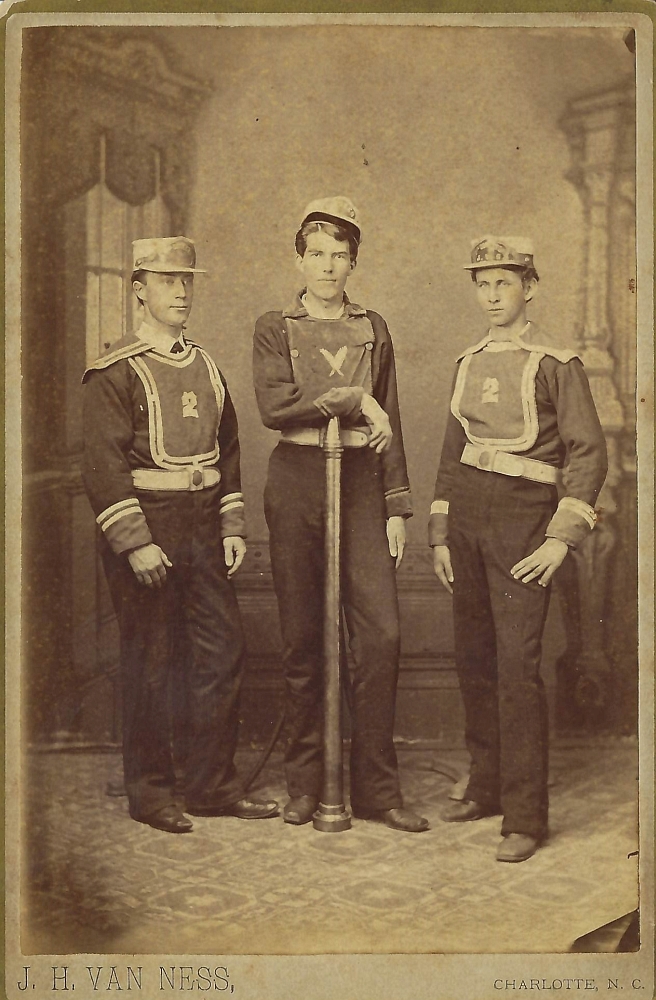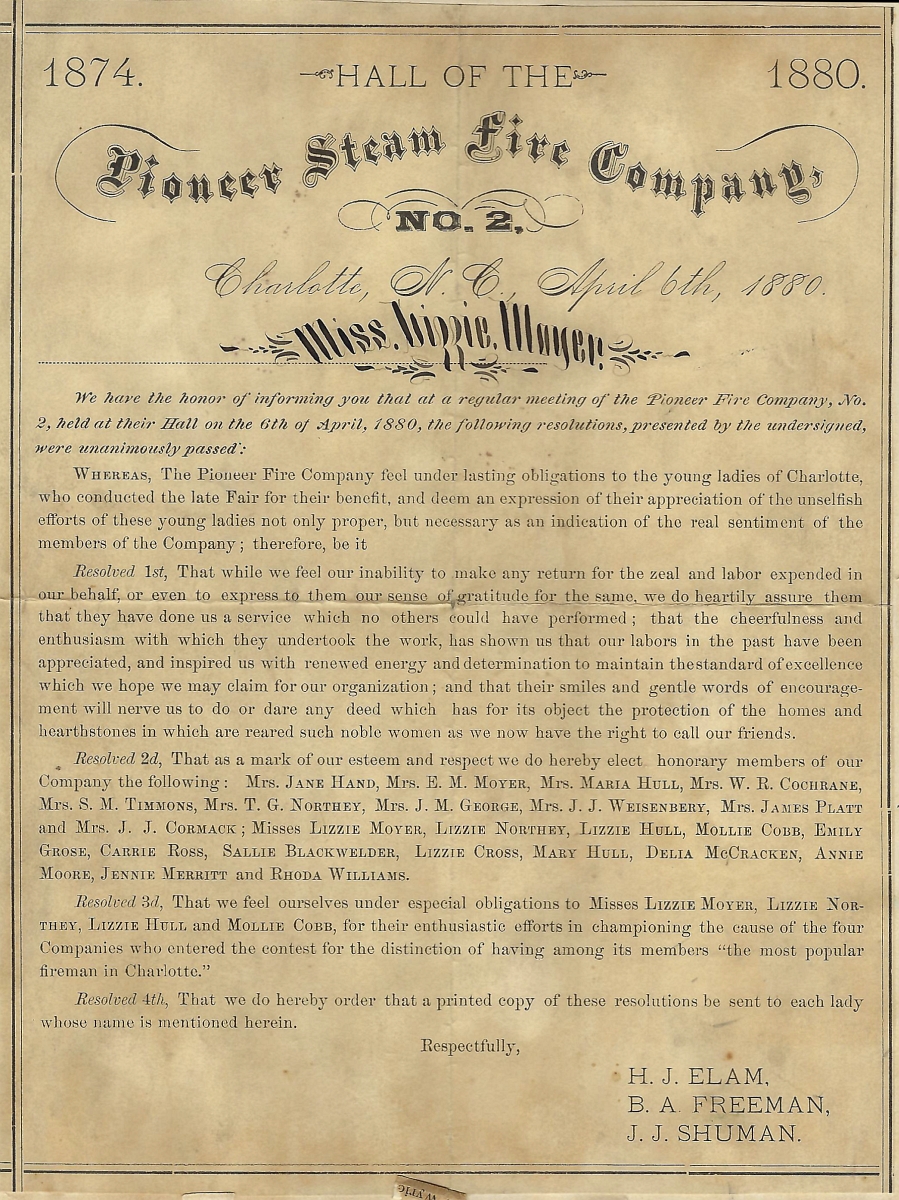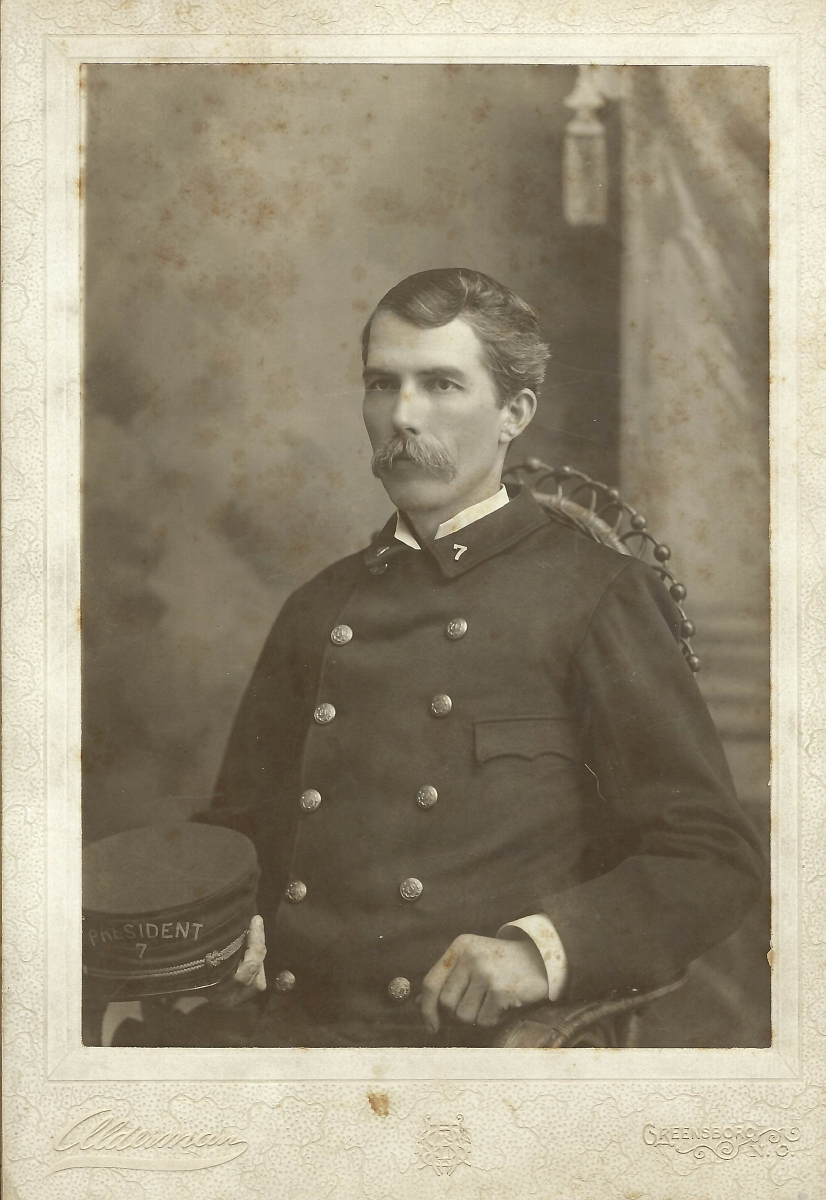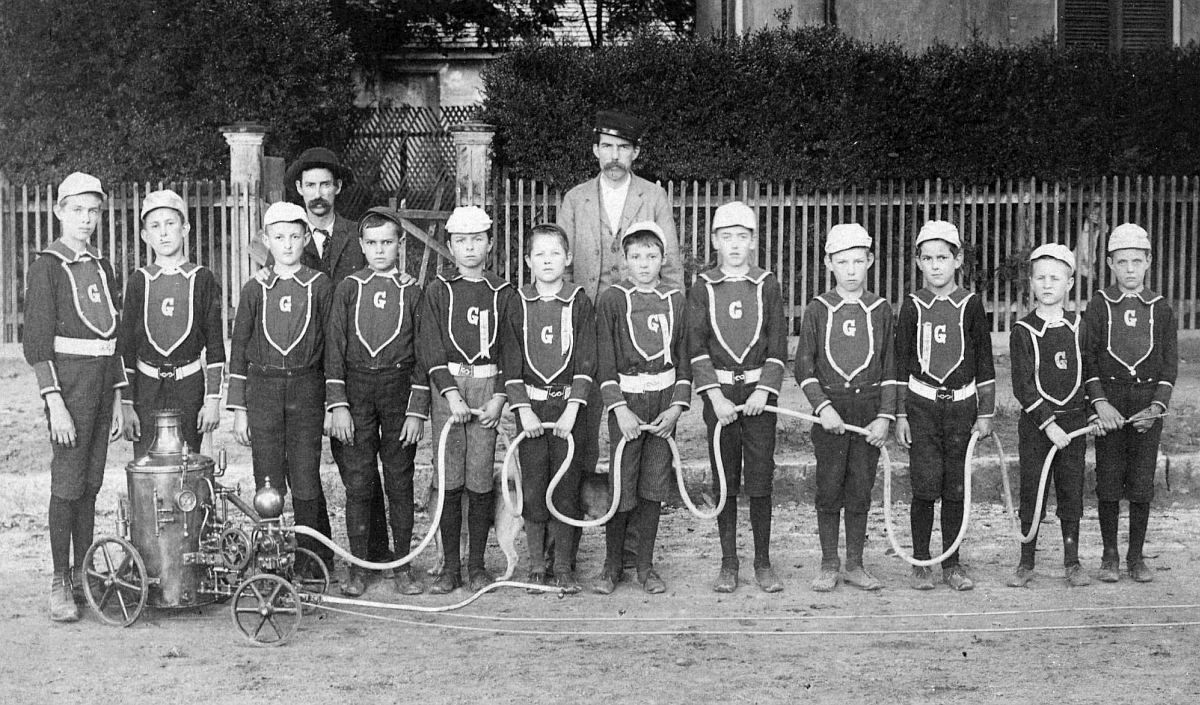Guest post by Tom Link, retired Charlotte battalion chief and history buff
For those of us who have loved the fire service, we have a special admiration for those firefighters who came before us, the men who built the organizations and established what would become hallowed traditions.
For me, the appeal of the fire service was based on my admiration of the men who did the job. The men who would share their stories and their enthusiasm. The men who would push you to be a better person by their example.
Not many people in the fire service today would know of Harper Johnson Elam, but his love of the fire service created organizations that have been the foundation of the fire service in North Carolina.
Early Years in Charlotte
Harper J Elam’s first involvement in the fire service began in Charlotte at the age of 17 with the creation of a volunteer fire company in 1874. At that time, the Hornet Steam Fire Engine Company was already a well-established volunteer fire company active in the community and its membership closely resembled the list of “who’s who” of Charlotte’s elites at the time. The Hornets had been using an old Clapp & Jones steam fire engine for a number of years, but it was beginning to have some problems. The Hornets petitioned for a new fire steam fire engine and the old Clapp & Jones engine was sold to a scrap dealer. It soon captured the attention of a young Irish mechanic, A.A. “Jake” Hand.
Jake Hand was a young man and did not enjoy the power, prestige or position that members of the Hornet Fire Company possessed. As he looked at the pile of scrap, he saw possibilities for the old engine. He talked a group of friends into helping him repair the old engine. One of those friends was a young printer by the name of Harper J. Elam. Soon, the group decided to form the Pioneer Steam Fire Engine & Hose Company No. 2. The young men asked a Civil War veteran, Captain Frank McNinch, to serve as their president. One requirement for membership was an age restriction… all other joining members were required to be between the ages of 16 and 21.
It was not long before the young men of the Pioneer Steam Fire Engine Company had the opportunity to prove their worth to the people of Charlotte. They pulled the newly repaired and refurbished steam fire engine to a large fire and assisted the Hornet Fire Company in extinguishing a threatening fire. The people were impressed by their enthusiasm and the fact that the young men carried their fire hoses on their shoulders as they pulled their old steam engine. The community soon rallied to help raise money for the purchase of hose reels.
Left to right: J. E. Brown, Harper J. Elam, J. V. Stiteler, 1876.
By 1878, Harper J. Elam was president of the Pioneer Steam Fire Engine Company. Membership had grown and so had efforts to supply the young fire company with uniforms and equipment. In the photo dated 1876 above, Harper J. Elam is standing in the middle with J. E. Brown on the left and J. V. Stiteler on the right. The young men attracted the attention of the young women of Charlotte. Harper J. Elam showed his appreciation for the fundraising efforts of Elizabeth Moyers by issuing a certificate of appreciation from the Officers of the Pioneer Steam Fire Engine Company. They would be married that same year.
Pioneer Steam Fire Engine Company No. 2 resolution, April 6, 1880.
Moved to Greensboro
Harper J. and Lizzie Elam moved to Greensboro in April of 1883. Harper J. Elam is best remembered as one of the founders of what has become the Greensboro News and Record. Greensboro respected him as one of their best fire service advocates. Elam joined the Steam Fire Engine Company No. 1 after moving to Greensboro. In 1887, Harper J. Elam joined with other progressive firefighters to organize the North Carolina State Firemen’s Association. In 1891, Elam was a founding member of the Eagle Hose Company No. 7. and was elected president.
Harper J. Elam, President of Eagle Hose Company No. 7.
In 1889, Harper J. Elam conceived of the idea to create a boy’s fire brigade and to allow them to participate in the upcoming firemen’s tournament in Durham as part of the meeting of the North Carolina State Firemen’s Association. He contacted an old friend in Charlotte, Sinclair Blackwelder, and asked for permission to use his working scale model of the old Pioneer Volunteer Steam Fire Engine.
Sinclair Blackwelder had been one of the original members of the Pioneer Steam Fire Engine Company. He was an apprentice at John Wilkes’ Mecklenburg Iron Works. His father, Lawson Blackwelder, was a veteran of the Mexican-American War and was serving as one of Charlotte’s earliest police officers. Sinclair Blackwelder’s skills allowed him the run of the foundry, and as a project, began the construction of a working scale model of the old Clapp & Jones Steam Fire Engine that was in use by the Pioneers. The model soon appeared at Industrial fairs in the state. Blackwelder agreed to Elam’s request and it was soon packaged for rail shipment to Greensboro.
Harper J. Elam announced his intentions and tendered two requirements: a mother’s permission and a mother’s promise to provide a fireman’s uniform for their son. Soon the Little Giant Steam Fire Engine Company was drilling under the supervision of Elam and Charlie Whittington. Henry Lewis, an engineer of one of the Greensboro fire companies, was enlisted to get the little engine back into working order. Soon, the boys were tearing down Market Street with their fire engine, much to the dismay of anyone on the street or sidewalk. A police officer arrested eight of the boys, but the Mayor interceded on their behalf. The group practiced for three weeks and then traveled to Durham to participate in the tournament. All indications are that they all survived the experience, and most likely several of these young men later served as firefighters in their communities.
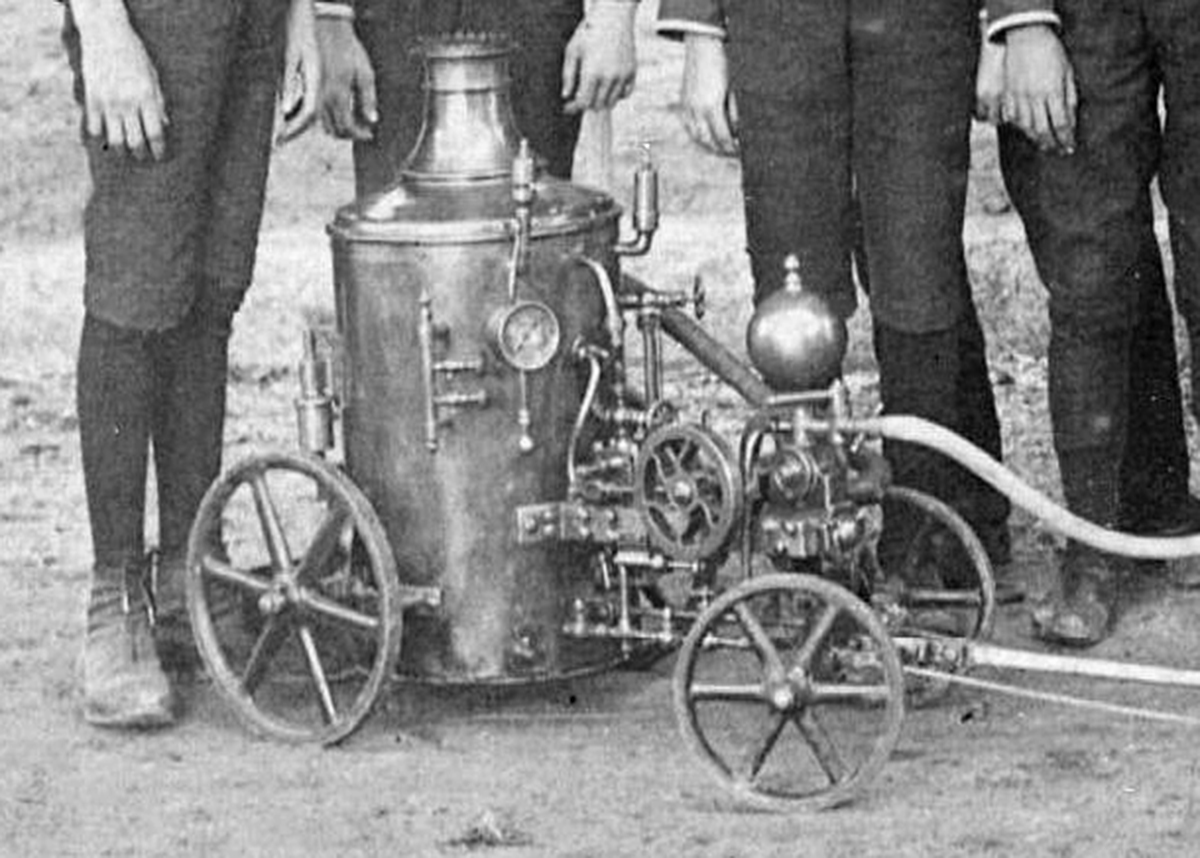 Little Giant Steam Fire Engine Company, undated.
Little Giant Steam Fire Engine Company, undated.
Greensboro Daily News (retrospective), December 13, 1925.
Displayed in Charlotte
The Charlotte Fire Department has maintained the old model steam fire engine for many years. It has sat in the lobby of the old training academy, and later in the lobby of the old rented CFD Headquarters on 9th Street. I doubt many people have understood the meaning and value of this unique part of our history.
The old model of the Pioneer’s Clapp & Jones Steam Fire Engine is an important item of memorabilia that contributes to the memory of the early firefighters of Charlotte, Greensboro, and the state of North Carolina. I have great admiration for Harper J. Elam and his forward thinking. What a great way to introduce young people to the fire service. Today, providing young people with the opportunity to experience and learn about the fire service is viewed as a component of cultural change, one of the sixteen Life Safety Initiatives of the National Fallen Firefighters Foundation. It is just one example of his legacy and contributions to our history and traditions.
To my knowledge, Sinclair Blackwelder’s model of the Clapp & Jones Steam Fire Engine has been in the process of restoration. Hopefully, it can be restored to working order once again. Captain Clifford Grayson, the longtime head of the CFD mechanical shop, once told me that the men at the shop had hooked up the old model’s steam whistle and that it rattled all the windows. I hope that I get to hear it as well. I know it can still inspire future generations of firefighters.
Acknowledgements
Special thanks to Erin Elam and the descendants of Harper Johnson Elam, and to Mike Legeros, who is working on the history of the North Carolina State Firemen’s Association.
